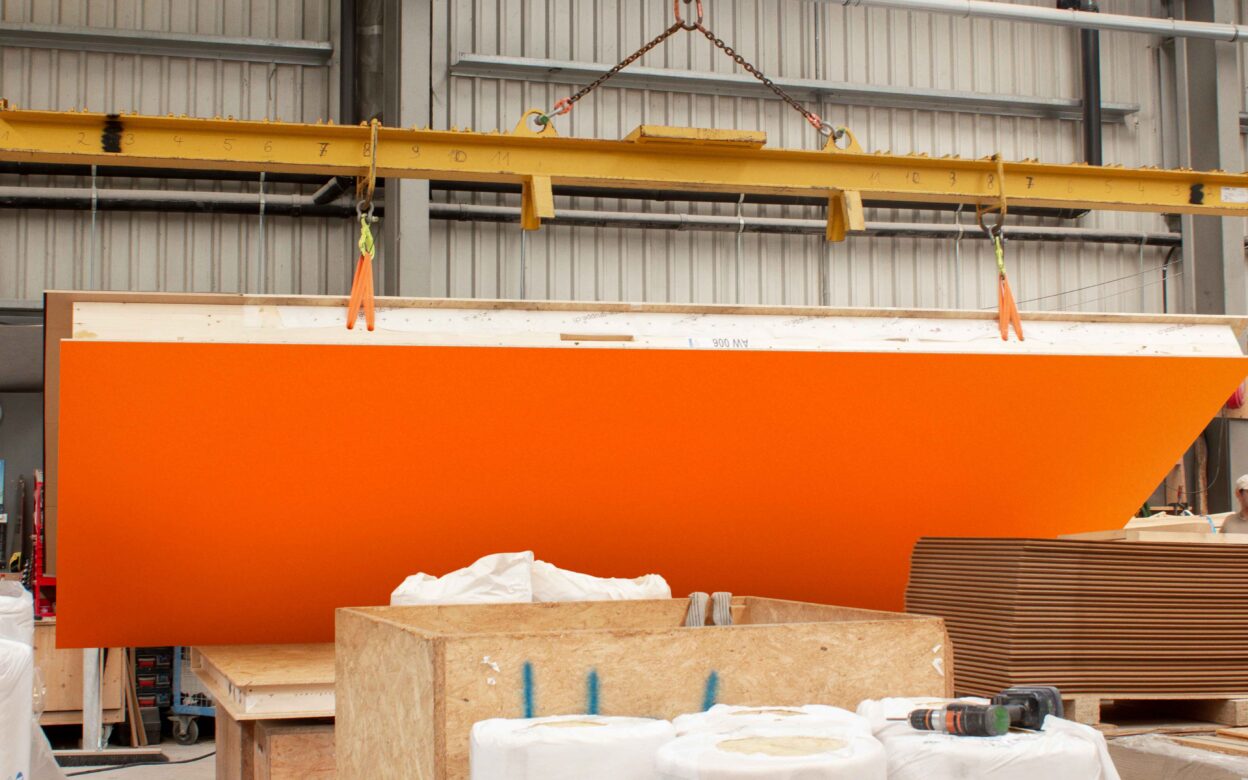

These are time-consuming to apply onsite and can rip or tear easily due to the UK’s varying weather conditions. However, Arclin sees the growing potential for its factory-applied Arctek® Dryshell™ overlay performance technology for enhancing vapour control performance for wood-based panels, such as SIP panels (structural insulated panels) and OSBs (oriented strand boards).
There’s a rising demand for high-standard, quick-build, affordable and critically, more sustainable housing. The consequence is that the UK and European construction industry is turning increasingly to timber-based building and that trend is forecast to accelerate as pressure on the sector to shrink its carbon footprint grows. Wood is seen as a prime material to help construction decarbonise. It draws climate warming CO2 from the atmosphere while growing and stores the carbon for life. It’s renewable and requires little energy in processing when compared to bricks for instance, and it’s a natural insulant. According to naturally:wood, timber building components provide lower thermal conductivity than equivalents in concrete, steel-frame and masonry.
Quality timber frame housing demands effective vapour control
Timber buildings, of course, must match or beat other construction types on quality and durability. That means many wood building products, notably timber-based panels, need moisture protection and effective vapour control. They are particularly vulnerable to water ingress during the construction phase, which can compromise performance and, worst case, shorten their lifespan. Any barrier to moisture must also act as a vapour control layer, allowing water vapour to escape the building envelope to prevent interstitial condensation. Currently a commonly used way to achieve vapour control and a moisture barrier is with site-fixed housewrap-type polyurethane membrane products, but these have limitations.
Site-fixed vapour control layer shortcomings
Protective vapour control layers such as traditional housewraps take time to fix, during which wood-based panel floor, wall and roofing products can be exposed to rain and humidity. It’s also not uncommon to see builders battling the elements to staple them into place so they overlap properly and do an effective job. It requires skill and building site skills are acknowledged to be in increasingly short supply. Vapour control layers, such as housewraps, can snag and tear too, allowing moisture ingress, and they need trimming to size on site, leaving waste offcuts that need to be responsibly disposed of.

Arctek® Dryshell™ has the vapour control layer answers
Arctek® Dryshell™ overcomes deficiencies of site-fixed vapour control layers. It’s based on a technology that’s long-established, tried, tested and extensively used in America. It comprises a proprietary vapour permeable, water-resistant layer which is thermally fused to timber-based panels in the producer or processor’s factory. Thermally fused to the panel, either on a single sheet press or continuous production line, it is most used on OSBs and SIP panels. It can also be applied to other timber sheet materials, including plywood.
Factory-applied vapour control layer for quality
Factory application of Arctek® Dryshell™ means the process is completed in a climate-controlled environment where quality can be monitored and managed. The result is a consistently uniform, high-grade finished product, which has a continuous integrated vapour control and moisture protective layer. Additionally there is no more potential for membrane overlap gaps or snagging tears for the moisture to get in and penetrate the panel as you could get with more traditional plastic-based housewraps.
Vapour control for multiple wood building approaches
Arctek® Dryshell™ is designed for use on wood sheet materials used in closed and open panel site-built timber frame developments. It is also the answer for structural insulated panels comprising a thick insulating foam core sandwiched between two structural facings, which are typically OSB.
Arctek® Dryshell™ is ideally suited for use with offsite, modern methods of construction as well as where components, such as wood-based floor, roof and wall panels or cassettes, are prefabricated in factories for rapid erection on site.
By choosing Arctek® Dryshell™, timber framed housing manufacturers and suppliers can make improvements to their processes and take greater advantage of the growing timber frame market in the UK and Europe. To find out more about how Arctek® Dryshell™ can benefit your timber framed house building projects, request a sample or contact us with an enquiry.


